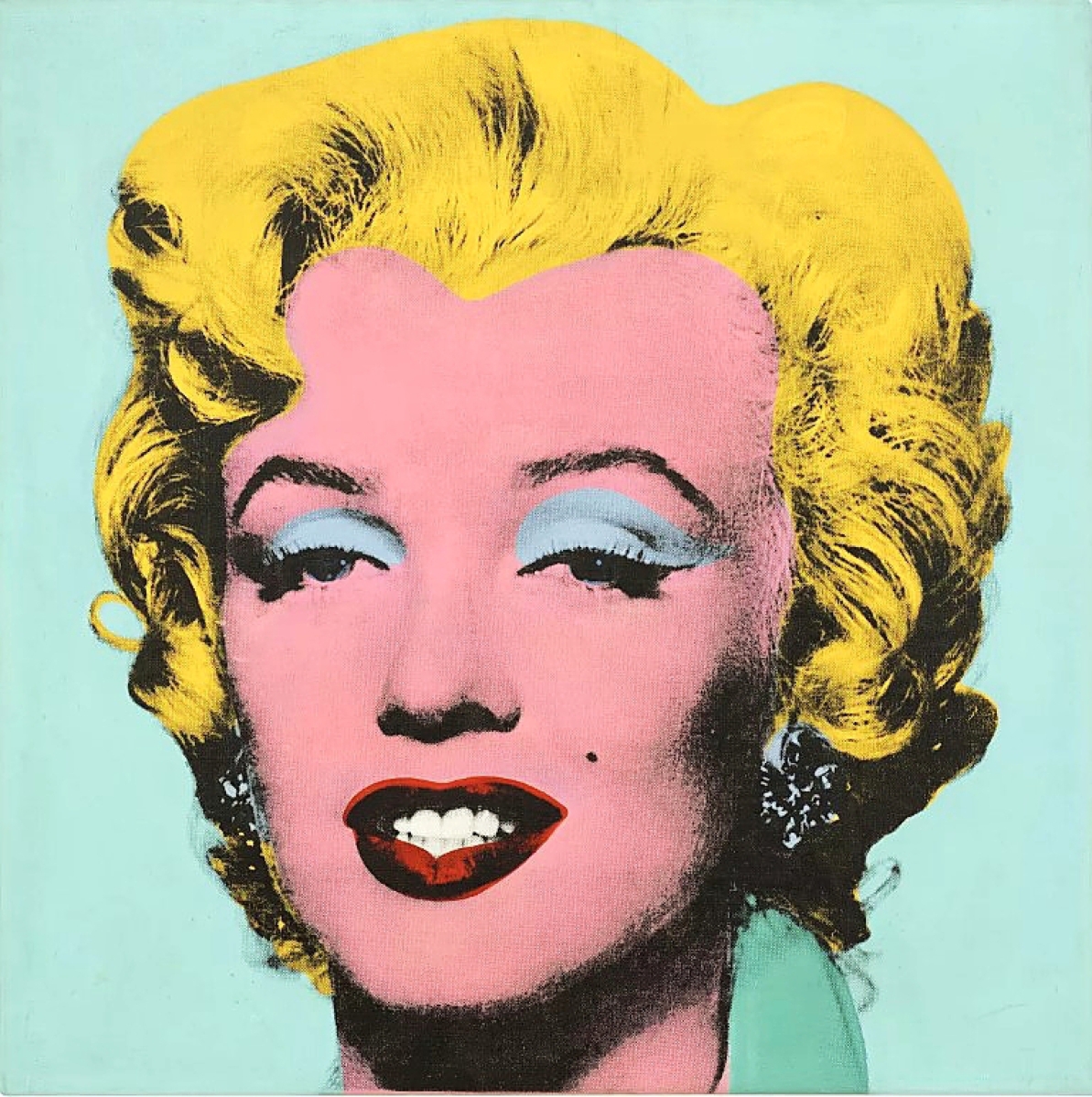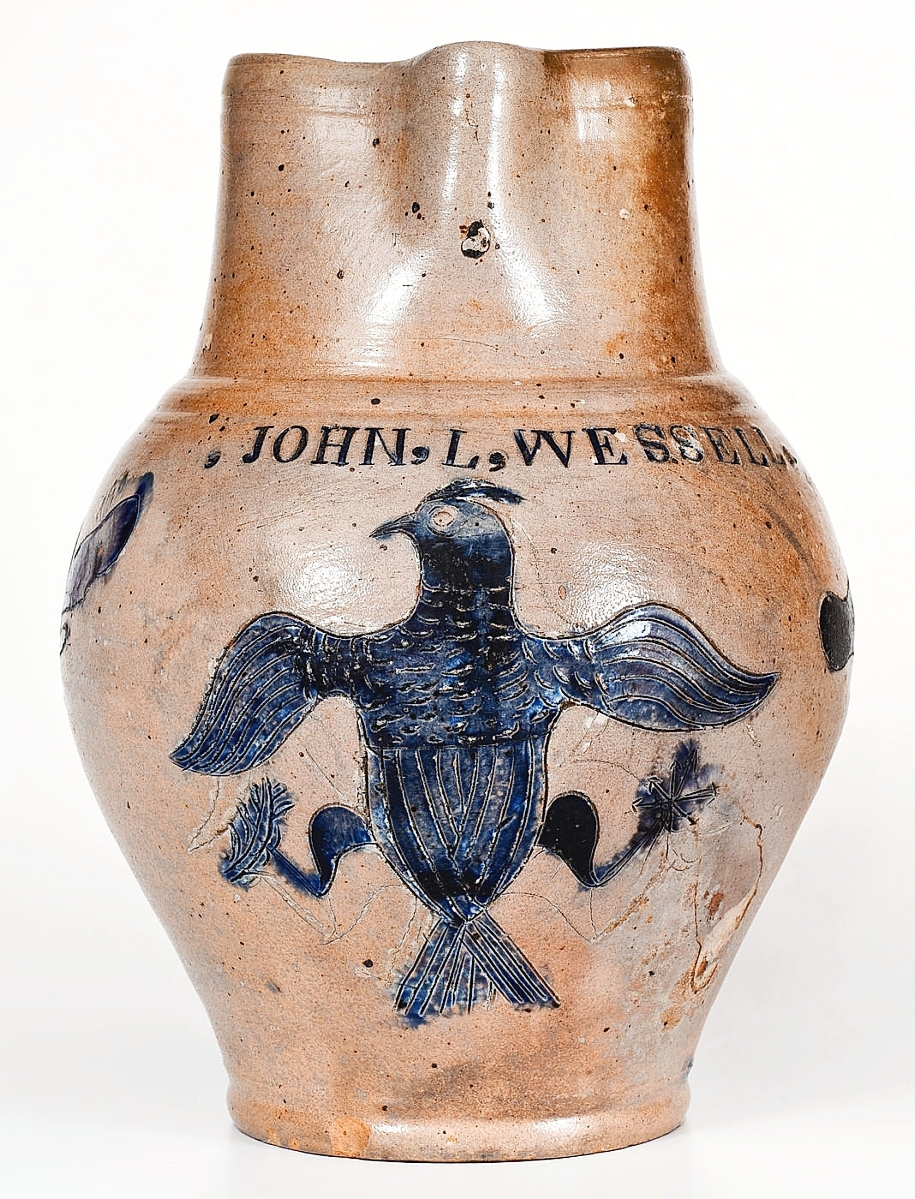By Z.G. Burnett, Associate Editor
This year was a raucous year at auction with records broken across all categories and houses. With almost every other category of retail affected by economic pressure, secondary sales of high-priced, rare objects remained strong. The top of the top luxury sales set records for everything from the work of Vincent van Gogh to that of Edward H. Bohlin. In no particular order, Antiques and The Arts Weekly presents:

Most Valuable Single-Owner Sale
What: Sale of tech mogul and late Microsoft co-founder Paul G. Allen’s (1953-2018) collection.
Where: Christie’s, New York
When: November 9-10
How Much: $1,622,249,500
Why: The sale was led by Georges Seurat’s “Les Poseuses, Ensemble (Petite version), 1888, for $149,240,000, the highest price ever achieved for a Seurat or any Impressionist or post-Impressionist work of art. The catalog of 95 lots sold 100 percent by lot with 65 percent selling above their high estimates, including records for 24 artists, including Thomas Hart Benton, Jan Brueghel the Younger, Paul Cezanne, Lucian Freud, Paul Gauguin, Barbara Hepworth, Jasper Johns, Gustav Klimt, Diego Rivera, Nancy Rubens, Edward Steichen, Mildred Thompson, Vincent van Gogh and Andrew Wyeth. John Singer Sargent’s “The Façade of La Salute” and Paul Klee’s “Bunte Landschaft” each set a record for a work on paper, while Joseph Kosuth saw a record for a photograph by the artist.
Christie’s New York is at 20 Rockefeller Plaza. For information, www.christies.com.

Most Expensive Work Ever Sold At Auction In Germany
What: “Self-portrait Yellow-Pink,” Max Beckmann (German, 1884-1950), 1943-44, oil on canvas.
Where: Grisebach Auktionen, Selected Works Auction
When: December 1
How Much: $24.4 million
Why: Painted during Beckmann’s exile in Amsterdam after fleeing Nazi Germany, the painting was in his wife Quappi’s possession until her death in 1993 and it was last sold in 1996. The auctioneer believed that this was the most beautiful of the artist’s many self-portraits, and noted that “this chance will never come again” before opening bidding at 18 million. The painting sold to a private Swiss buyer who bid over the phone.
Grisebach Auktionen is at Fasanenstraße 25, Berlin, Germany. For more information, www.grisebach.com.

Most Expensive Advertising Sign Ever
What: 48-inch Double-Sided Porcelain Musgo Gasoline Sign
Where: Richmond Auctions, August 2022 Showcase – Petroliana, Automobilia & General Advertising
When: September 1
How Much: $1.5 million
Why: Found in a Michigan attic, this Musgo Gasoline sign is considered the Holy Grail of antique advertising signs by most collectors. The sign was fresh to market, saved from the fate of its peers; when Musgo closed after only six months of operation in Muskegon, Mich., most of their signs were used as septic tank lids. This example is in the best-known condition of these signs.
Richmond Auctions is at 1200 Woodruff Road, Richmond, Va. For additional information, www.richmondauctions.com.

Most Expensive Piece Of Twentieth Century Art & American Art Ever Sold
What: “Shot Sage Blue Marilyn,” Andy Warhol (American, 1928-1987), 1964, screen print.
Where: Christie’s New York, The Collection of Thomas and Doris Ammann
When: May 8
How Much: $195 million
Why: Andy Warhol’s images of Marilyn Monroe represent the cultural power and enduring legacy of both artist and actress. This screen print is considered superior to Warhol’s earlier endeavors, involving a more complex screening process that merged the acetate colors seamlessly. Ahead of the auction, Christie’s wrote that the painting is “one of the rarest and most transcendent images in existence,” inspiring comparisons with the great feminine beauties of renaissance up to modern art in the catalog’s extensive essay.
Christie’s New York is at 20 Rockefeller Plaza. For information, www.christies.com.

Most Expensive Car
What: 1955 Mercedez-Benz 300 SLR Uhlenhaut Coupé
Where: RM Sotheby’s, Geneva, Switzerland
When: May 5
How Much: $142,769,250
Why: Sold to an undisclosed, private collector at a secret auction in the Mercedez-Benz Museum in Stuttgart, Germany, the 1955 300 SLR Uhlenhaut Coupé was just one of two prototypes engineered by Rudolf Uhlenhaut and is considered “one of the great jewels of motoring history.” The car was capable of 180 mph, making it one of the fastest road legal cars available at the time of its creation. This was achieved by enlarging the engine of the W 196 R Grand Prix car that won two World Championships under the operation of Argentine race car driver Juan Manuel Fangio. The other example of this car will remain in the museum’s collection on display.
Sotheby’s Geneva is at Rue François-Diday 2. For information, www.sothebys.com.

Most Expensive Sports Memorabilia
What: 1952 Topps Mickey Mantle #311 Mint+ 9.5 baseball card
Where: Heritage Auctions, Summer Platinum Night Sports Auction
When: August 27-28
How Much: $12.6 million
Why: Found in 1985 by Al Rosen, known in the industry as “Mr Mint,” this card was in the basement of a suburban Boston seller whose father had been a delivery driver for the Topps company. Many cards from this printing were believed to have been destroyed, but the seller’s father salvaged a full run of 75 in mint condition. This Mickey Mantle card was the best in the collection. After last selling for $50,000 in 1991 to an anonymous buyer, this “finest known example” reappeared to sell as the most valuable sports collectible to date. Emmy Award-winner director and producer Dan Klein is currently creating a documentary about the film with the working title Four Perfect Corners.
Heritage Auctions is at 2801 West Airport Freeway, Dallas, Texas. For additional information, www.ha.com.

Most Expensive Photograph
What: “Le Violon d’Ingres,” Man Ray (American, 1890-1976), 1924, unique gelatin silver print
Where: Christie’s New York, The Surrealist World of Rosalind Gersten Jacobs and Melvin Jacobs
When: May 15
How Much: $12.4 million
Why: An iconic academic image of feminine form translated into the language of Dada, Man Ray’s “Le Violon d’Ingres” is a defining image of the Surrealist art movement. This unique gelatin silver print, produced using Ray’s own “rayograph” transference technique, is known as the Jacobs Print due to its former owners, Rosalind and Melvin Jacobs. According to the catalog essay, the print was shown for the first time in Man Ray’s show at the Bibliothèque nationale de France in Paris in 1962, and it was from this exhibition that the Jacobses acquired the photograph.
Christie’s New York is at 20 Rockefeller Plaza. For information, www.christies.com.

Most Expensive Camera
What: Leica 0-Series no.105
Where: Leitz Photographica Auction No. 41, Vienna, Austria
When: June 11
How Much: $15,151,847
Why: Produced by inventor of the Leitz Camera, Ernst Leitz, this 35mm example was one of about 22 “0-series” prototypes that was created before wide release. The camera also once belonged to Oskar Barnack, a German photographer who designed the “Liliput camera” in 1913, the model of which would evolve into the first commercially successful 35mm still camera produced by Leitz. Barnack’s name is engraved on the camera’s viewfinder, enhancing the unique object’s value and importance in the history of photography.
Leitz Photographica Auction is at Westbahnstrasse 40. For information, www.leitz-auction.com.
Most Expensive Pair of Spurs
What: Edward H. Bohlin’s Own Personal Bohlin Parade Spurs
Where: Brian Lebel’s Old West Auction, Mesa, Ariz.
When: January 22
How Much: $236,000
Why: Ed Bohlin is considered by many to be the finest saddle maker in American history, so it is no surprise that his own, monogrammed spurs from his personal parade uniform would set the record at $236,000. These were part of the “Big Saddle” uniform, which took Bohlin and his team 14 years to complete. Every other piece of this ensemble is now in the Autry Museum of the American West’s collection, but these sold to a private buyer.
Brian Lebel’s Old West Events is at 10141 Westend Drive, Greensboro, Ga. For more information, www.brianlebel.com.

Most Expensive Vintage Chanel Garment
What: “Russian” Tunic, Spring 1922, Gabrielle Chanel, Paris, with embroidery by Kitmir
Where: Christie’s Exceptional Sale, Christie’s Paris
When: November 22
How Much: $161,094
Why: Found in the attic of a family château in Grasse, France, this early tunic dress from the eponymous line of Gabrielle Bonheur “Coco” Chanel (1883-1971) remained in its box for more than a century before being discovered. Designed by Chanel, the tunic was embroidered with the assistance of the Grand Duchess Maria Pavlovana (Russian, 1890-1858) who created the Kitmir embroidery company that employed Russian emigrés fleeing the Bolshevik revolution. A phone bidding battle ensued, but the victor was a “French institutional buyer.”
Christie’s Paris is at 9 Avenue Matignon. For information, www.sothebys.com.

Most Expensive Sneaker Sale
What: Louis Vuitton & Nike “Air Force 1” by Virgil Abloh
Where: Sotheby’s New York
When: February 9
How Much: $23.5 million
Why: The Louis Vuitton & Nike “Air Force 1” by Virgil Abloh sale consisted of 200 lots, marking the first ever release of the sneakers and pilot cases created by Abloh (American, 1980-2021). The prices for individual lots, each a pair of sneakers, averaged out to more than $100,000 per shoe. This result was more than eight times the $3 million high estimate for the sale. Proceeds from the $23.5 million sale benefited The Virgil Abloh™ “Post-Modern” Scholarship Fund, which in partnership with the Fashion Scholarship Fund, supports the education of academically promising students of Black, African American or African descent.
Sotheby’s New York is at 1334 York Avenue. For information, www.sothebys.com.

Most Expensive New York City Stoneware
What: “John L. Wessell” stoneware pitcher with incised Federal eagle decoration, 1806
Where: Fall 2022 Stoneware & Redware Auction, Crocker Farm, Sparks, Md.
When: November 4
How Much: $264,000
Why: Attributed to the Crolius family of potters, this New York City pitcher was made for local cabinetmaker John Wessells (here “Wessell”). The pitcher shows a spread-winged Federal eagle clutching an olive branch and arrows in its talons, as well as a patriotic shield, similar to the original 1782 design of the Great Seal of the United States. It was manufactured in Manhattan, the birthplace of cobalt-decorated stoneware in America, its use of deftly incised decoration and its depiction of this classic image make this work the definitive example of the early American stoneware craft.
Crocker Farm is at 15900 York Road. For more information, www.crockerfarm.com.





